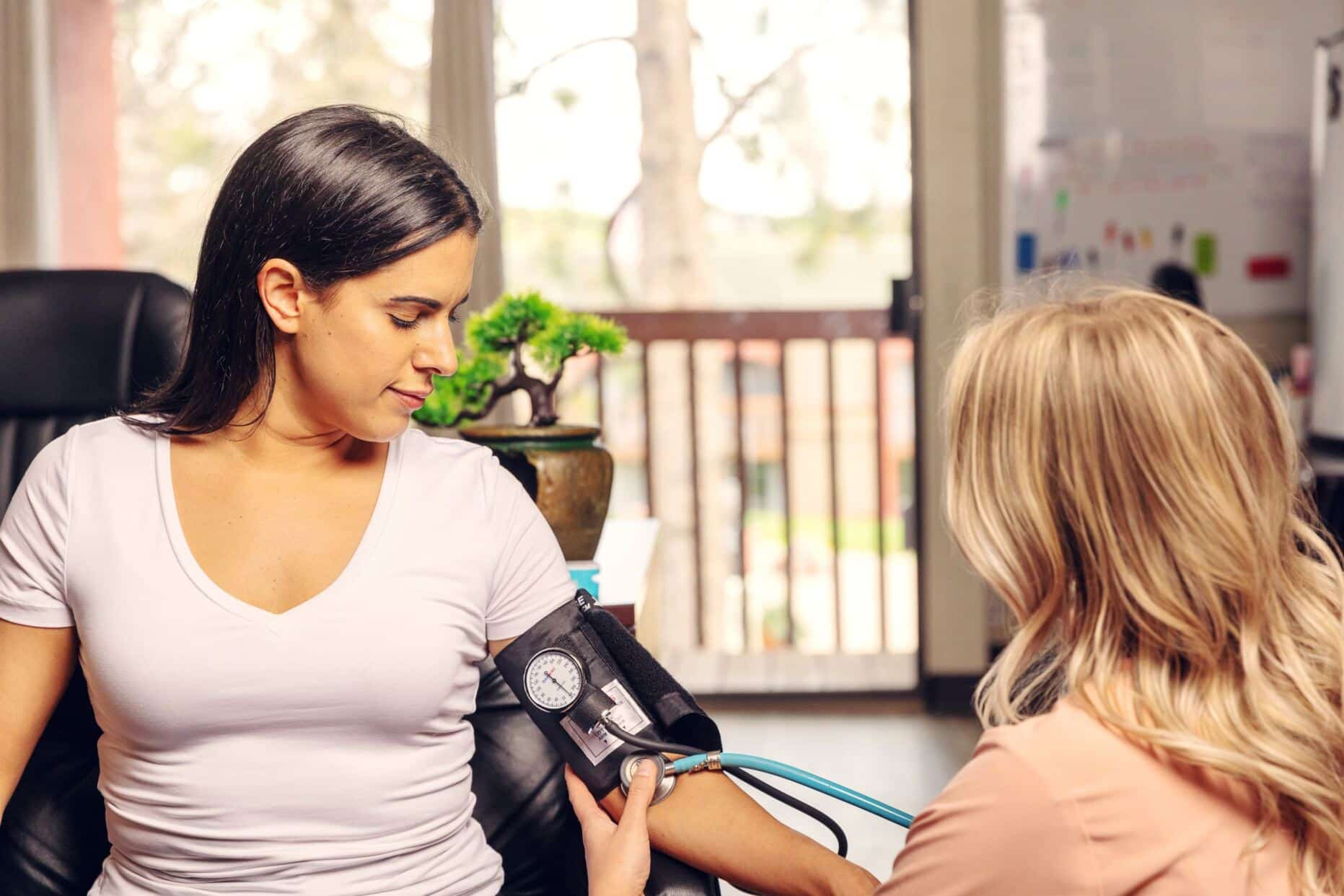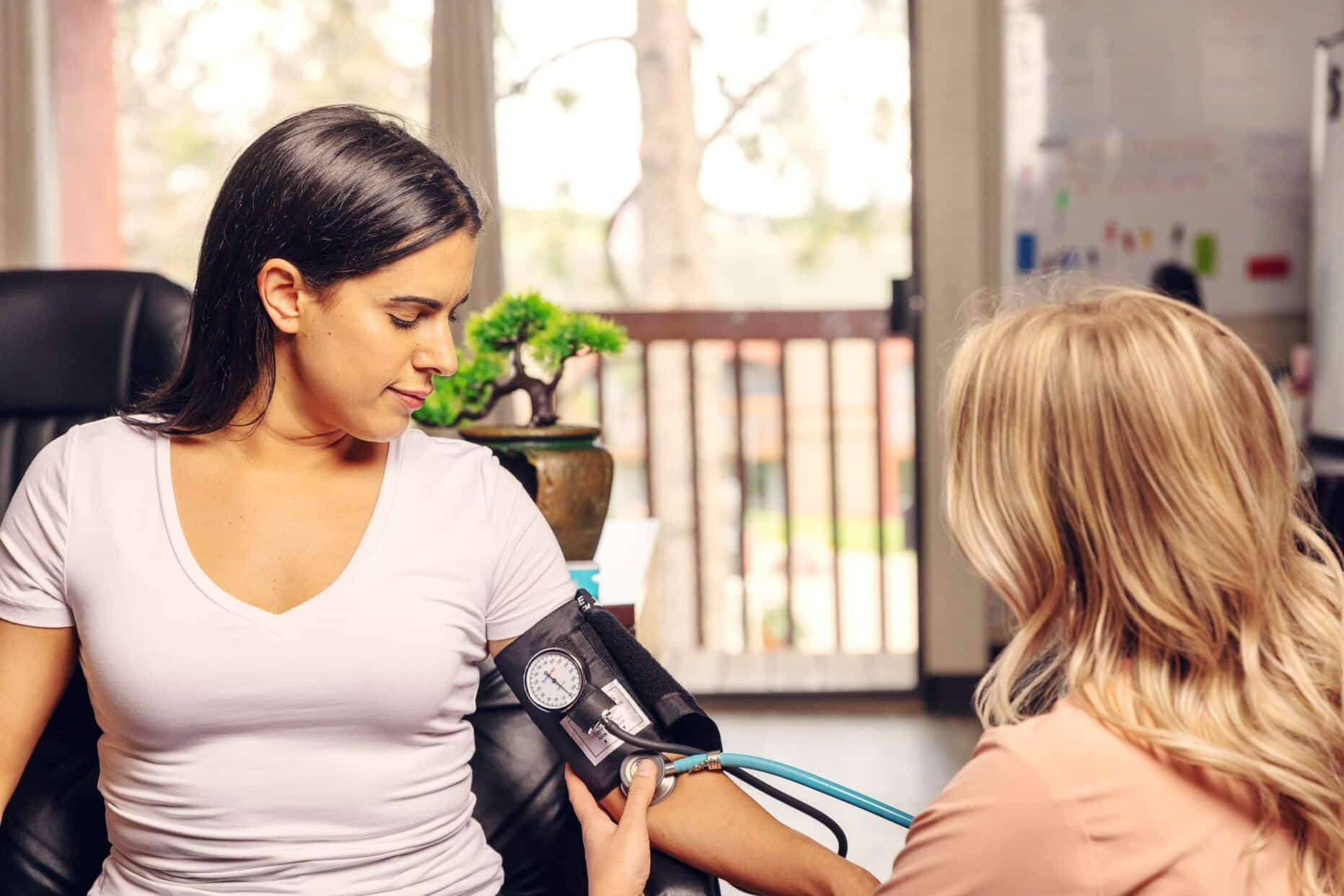Rapid detox is a controversial form of detoxification for adults struggling with opioid dependence. Although rapid detox may be a faster method to rid the body of substances, it can also be associated with many risk factors.
Rapid detox, otherwise known as rapid detoxification is usually performed in a hospital setting. The patient will be given general anesthesia, typically through an IV. During this time, a patient is given drugs, like the opioid antagonist Naloxone to flush the body and rapidly start the detox process.
As mentioned above, it is important to know that there are recommendations against rapid detox because of the risks involved. Although it may be appealing to many people because of its seemingly fast-acting process, there are things you need to be informed about if you are considering a rapid detox procedure.
How Does Rapid Detox Work?
Rapid detox works by using opioid antagonist drugs such as naloxone. An opioid antagonist is a drug that attempts to remove the effects of opioids in the body. Once a patient is under general anesthesia, the medication is given to reverse the effects of substances in the body, but because this is occurring at a rapid rate, it can put a strain on the body. There have been cases of deaths connected to rapid detox procedures, and we have more information regarding those medical studies down below.
It is important to note that rapid detox is not a cure for addiction, which is a complicated disorder and typically requires long-term treatment.
Health Risks of Rapid Detox
Although ridding the body of substances quickly, while asleep sounds appealing, there are many risks associated with this type of procedure. Most medical professionals recommend a traditional detox method, where a patient tapers over a period of time.
There may be bodily strain from the rapid detox procedure, and sometimes the body cannot handle the stresses that rapid detox can cause. There have been cases of cardiac arrest linked to rapid detox, and in some cases, this led to death of some patients.
A news article published in the Center for Disease Control and Prevention (CDC) stated that there are deaths related to anesthesia-assisted detox programs.
Additionally, the Journal of the American Medical Association (JAMA) states that there are several potential side effects of undergoing a rapid detox program:
- Breathing problems
- Kidney failure
- Respiratory distress
- Thyroid hormone issues
- High levels of stress hormones
- Irregular cardiac function
- Hallucinations
- Depression
- Suicide ideation
- Death
The study from JAMA also mentions that there are 3 cases of patients who underwent rapid detox and experienced potentially life-threatening side effects. Additionally, the researchers did not see any significant difference in effectiveness for those who underwent a regular detox program vs. a rapid detox procedure.
Drug abuse and mental illness often go hand in hand, which is why Sunshine Behavioral Health offers numerous dual diagnosis treatment programs to address both mental health and addiction. Rapid detox does not address any mental health conditions, it only attempts to rid the body of narcotics. Rapid detox only treats addiction at a surface-level, by reducing withdrawal symptoms. If you are looking for a way to get rid of an addiction problem for the long haul, it would be best to look at a comparison between rapid detox and regular detox programs.
Is Rapid Detox Effective?
If you are considering a rapid detox program, you may be wondering if it’s truly a solution to substance use disorders. Although this was a well-known procedure back in the 1980s, it is becoming less and less popular due to the risks involved. A news article published in the Center for Disease Control and Prevention (CDC) stated that there are deaths related to anesthesia-assisted detox programs.
Additionally, the Journal of the American Medical Association (JAMA) states that there are several potential side effects of undergoing a rapid detox program:
- Breathing problems
- Kidney failure
- Respiratory distress
- Thyroid hormone issues
- High levels of stress hormones
- Irregular cardiac function
- Hallucinations
- Depression
- Suicide ideation
- Death
The study from JAMA also mentions that there are 3 cases of patients who underwent rapid detox and experienced potentially life-threatening side effects. Additionally, the researchers did not see any significant difference in effectiveness for those who underwent a regular detox program vs. a rapid detox procedure.
Rapid detox only treats addiction at a surface-level, by reducing withdrawal symptoms. If you are looking for a way to get rid of an addiction problem for the long haul, it would be best to look at a comparison between rapid detox and regular detox programs.
Rapid Detox Vs. Regular Detox
To better understand the differences and similarities between rapid detox and regular detox, here is a comparison of what you can expect from each process.
Rapid Detox
- The patient is given general anesthesia and sedated
- Opioid antagonist drugs are provided in large doses
- The patient is monitored after treatment for typically 24 hours or less
- Medical assistance is available before, during, and shortly after treatment
- The patient may be discharged when stable
Regular Detox
- The patient is not given general anesthesia
- Opioid antagonist drugs are provided in small to moderate doses to taper the patient from narcotics
- The patient is monitored after treatment for 72 hours or more
- Medical assistance is available before, during, and after treatment
- The patient is recommended to undergo residential treatment after regular detox, where they obtain therapy to address mental health conditions and treat the underlying causes of addiction
Should I Do Rapid Detox?
The goal of this article is to help you make an informed decision about detox programs that truly work. The information gathered from scientific journals and years of research about rapid detox states that it is not ideal for treating the emotional effects and brain disease of addiction. Much like medication, rapid detox only treats withdrawal symptoms but does not do much in addressing the brain’s ability to overcome cravings, underlying conditions or avoid substance use disorder triggers.
Yes, some people may attempt to self-medicate by looking for a rapid detox drink or looking for centers that show an affordable rapid detox price, quick and easy treatments do not always translate to effectiveness. The studies report that the risks of undergoing a rapid detox procedure definitely outweigh its benefits.
In fact, news outlets report that rapid detox in California and New York is associated with deaths following the procedure.
If you are looking for a more sustainable and effective program, you may consider looking into a regular detox and complete inpatient or outpatient rehabilitation treatment for addiction.
What You Can Do Instead
If rapid detox addresses the symptoms associated with drug or alcohol withdrawal, complete rehabilitation will help you dig deep into the root causes of addiction. Going through the entire rehabilitation process will allow you to find custom-fit strategies that help you battle substance use disorder.
Here are some things you can expect when undergoing inpatient or outpatient rehabilitation in Sunshine Behavioral Health centers:
Drug Detox
Regular detox is still part of the process, but it isn’t much of an extreme procedure compared to rapid detox. The regular detox will typically last a few days, and a health professional will provide you with comfortable lodging, nutritious meals, and medications to ensure a safe and comfortable time during the peak of withdrawal.
It is normal to expect some discomfort during this time because the body is getting back to its usual state prior to substance use disorder. Our medical providers can prescribe comfort medications to combat the potential for nausea, vomiting, fatigue, and flu-like symptoms during drug detox. Once the body stabilizes after the drug detox period, you may proceed towards the inpatient or outpatient treatment experience.
Substance Abuse Treatment
Following regular detox, it is essential to have a formal treatment process to help you address the root cause of addiction. Sunshine Behavioral Health centers offer individualized treatment options, such as:
- 12 Step Treatment
- Dual Diagnosis
- Faith Based Treatment
- Holistic Treatment
- Intensive Outpatient Program
- Non-12 Step Treatment
- SMART Recovery
- Luxury Rehab
The treatment program that you will undergo depends on health professionals’ recommendations as well as your personal preferences. You may combinethese programs or complete one after another, depending on your specific needs.
Enrolling in an inpatient program requires you to stay in a rehabilitation facility or a period of time. This is done to help you focus on addiction recovery and remove you from potential environmental triggers that can cause a relapse. An outpatient program, on the other hand, does not require you to stay in the facility, but you are required to follow home instructions or attend activities within the center.
Aftercare
Undergoing treatment ensures that issues that trigger addiction are addressed. The role of aftercare is to help people to avoid further relapse and aid in long-term recovery. Aftercare is also a very important treatment because it helps patients become accountable even as they resume a normal life.
Some of the aftercare options that are available through Sunshine Behavioral Health centers include the following:
- One-on-one or group counseling sessions
- Continued psychotherapies
- Relapse prevention protocols
- Nutrition and fitness plans
- Habits and lifestyle changes
- Local support groups
- Regular monthly check-ins & monthly meetings
- Recreational activities and hobbies
Clients can do as many aftercare programs as they deem necessary to assist in their recovery.
If you are deciding about undergoing rehabilitation but are not sure about your condition, the list below may help you confirm the signs if you do have an addiction.
Signs Of Addiction
According to the recent Diagnostic and Statistical Manual (DSM-V), addiction is considered a health condition treated at the same level as other mental health disorders. In summary, there are 11 criteria that describe someone with a substance use disorder problem:
- Hazardous use: Your intake of drugs or alcohol has caused danger to yourself or your loved ones. These include overdosing on drugs, driving after drinking alcohol, or violent behaviors after substance use.
- Relationship problems related to substance use: Your relationship with family, friends, and other people have taken a negative turn after substance use disorder.
- Neglected major roles due to substance use: You have failed to fulfill responsibilities at work, school, at home, or in other settings.
- Legal problems: You may have experienced running into law enforcement in relation to substance use.
- Withdrawal: You are experiencing uncomfortable withdrawal symptoms such as nausea, muscle pain, vomiting, fever, and other bodily aches when you attempt to decrease or stop drug use.
- Used larger amounts: You have taken in larger doses of the substances recently compared to how you’ve done in your earlier days of drug or alcohol use.
- Tolerance: Related to a larger amount of use, your body seems to get used to the substance, so much that you need to gradually increase your intake to get the same effect.
- Physical and psychological problems related to use: You experience anxiety, depression, and other mental health issues. You may also have deteriorating health such as liver damage, heart problems, or respiratory issues because of drug, alcohol, or tobacco use.
- Giving up activities due to use: You may have quit hobbies, recreational activities, and other pursuits in exchange for increased substance use.
- Cravings: You experience an intense desire to take the substances and feel restless if you don’t take your regular dose.
- Repeated attempts to control or quit use: You have tried multiple times to stop or decrease your alcohol or substance use, but cravings and withdrawal symptoms may have stopped you from doing so.
- If you notice these signs on you or a loved one, it is best to seek professional help on how you can get started on your rehabilitation.
Paying For Rehabilitation
Here are some ways to finance your rehab treatment:
- Health insurance: You can verify your insurance with Sunshine Behavioral Health, as we accept most major insurance policies to cover your addiction treatment costs.
- Sponsors: There are government and non-government agencies that support causes related to addiction recovery. You may apply for grants and sponsorships to add to your rehabilitation treatment.
- Family and Friends: One way for your friends and family to show support is providing you with finances to help in addiction recovery. You may lend money or ask family and friends to become your sponsors.
- Fundraisers: You can set up an online crowdfunding account, create events, or sell products to help raise funds to cover partial or full costs of rehab.
- Savings: If you have some money in your savings account, this can greatly help to cover some or most of the treatment costs especially without insurance. Do not consider paying for rehab as a loss–it is an investment to your health and improvement of your life.
Choose Effective Over Rapid
Do not be enticed with the promise of rapid results of anesthesia-related detox. Rapid detox has been considered unsafe and ineffective by several medical sources. Remember, the most effective way is a steadier, yet fulfilling rehabilitation journey. It is possible to break free from addictions by taking it one day at a time–through long-term rehabilitation and individual recovery plans.
We Applaud Your Courage
We understand that it can feel scary and overwhelming to seek treatment and we are glad you are looking into all the options. Please feel free to reach out to one of our specialists today, to determine which process may be right for you.
Sources
Medical disclaimer:
Sunshine Behavioral Health strives to help people who are facing substance abuse, addiction, mental health disorders, or a combination of these conditions. It does this by providing compassionate care and evidence-based content that addresses health, treatment, and recovery.
Licensed medical professionals review material we publish on our site. The material is not a substitute for qualified medical diagnoses, treatment, or advice. It should not be used to replace the suggestions of your personal physician or other health care professionals.






